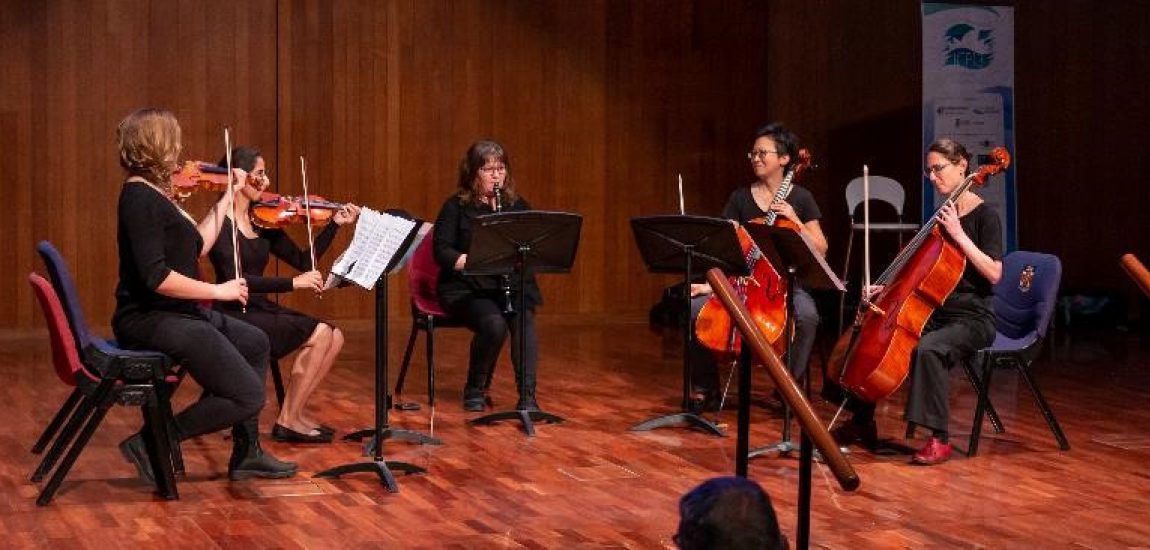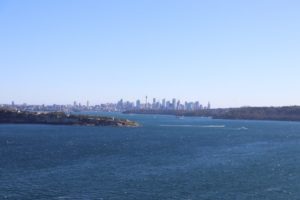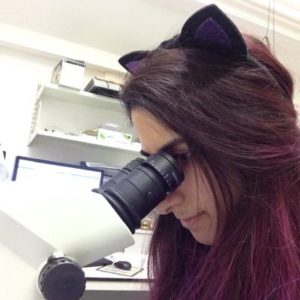
Ambassadors at ICP13 in Sydney: Rehemat

This article is part of a series of articles from 3 EAG ambassadors who attended ICP13 (International Conference on Paleoceanography). You can go back to read the introduction here.
Hi! I’m Rehemat and I am a foraminifera geochemist. I defended my PhD at UCL last year, and recently finished a postdoc at the University of Bristol. My postdoc focused on studying the biomineralisation and calcification response of planktonic foraminifera to the Paleocene-Eocene Thermal Maximum, using a combined geochemical and micropaleontological approach via LA-ICPMS and CT scanning, and it was these data that I presented at ICP.
ICP13 was my second ICP – I attended ICP12 three years ago in Utrecht. As ICP13 and the end of my postdoc somewhat coincided, and I was in a limbo state of finding new employment, I decided to apply to EAG for funding to attend ICP13. I really enjoyed my postdoc and so I was keen to tell my new foram stories, discuss the interpretations with specialists in the community, and seek out new opportunities too. This was the longest journey I have ever had to a conference and the furthest I have been from home (UK), and it was totally worth it. Beautiful scenery, sun AND (mostly importantly) nerding out about the ocean by the ocean for a whole week – what could be better?!
ICP is one of my favourite conferences. The community feel makes it possible to interact with other researchers without it being scary, and the lack of parallel sessions means you rarely get FOMO (fear of missing out) and it’s possible to take care of yourself whilst at the conference too – you never have to worry about which room you’re trying to find next! I thoroughly enjoyed all the talks during the week, and it was great to hear some truly exciting science from researchers across a range of career stages. Although some of the talk topics (like Antarctic ice sheet dynamics) were a little outside of my immediate research expertise (and time period – I don’t think I’ve spent so long in the Holocene since undergrad!), it was interesting to be able to learn more about them. I also really enjoyed the talks focused around corals – my journey into palaeoceanography began with Miocene coral biodiversity, so these critters hold a special place in my heart!
During my poster session, I had some really useful discussions and got good feedback on my poster too which will definitely be helpful when I start to write up my data into a paper. I also really enjoyed attending the other poster sessions, and it was particularly cool to see the posters which focused on proxy calibrations and marine calcifier palaeobiology. The conference additionally gave me the opportunity to catch-up with collaborators from my PhD, and colleagues and friends too – at the poster sessions, breaks and the dinner cruise. I also was able to meet researchers who I only previously knew via Twitter!
My violin also made the trip to ICP, as I took part in the Paleomusicology concert in a quintet with researchers from Canada (Prof. Karen Kohfeld), Australia (Prof. Zanna Chase and Dr. Georgy Falster) and the USA (Prof. Mea Cook). We formed our group prior to the concert (over email), and decided to call ourselves “The Teleconnections” as we were playing a chamber music piece by Telemann. Playing music has always been a big part of my life (I started playing violin as a child), and being able to mix this with work is a joy. It also adds a good work-play balance to the conference – an aspect which is so important to advocate within academia.
Overall, I had an awesome time at ICP. I have gained new knowledge, made new contacts, and have returned to the UK with renewed motivation to write up my foram story into a paper. Thank you EAG for funding my attendance – I had a fantastic time!
About the author
Rehemat Bhatia is a foraminifera geochemist. She recently finished a postdoc at the University of Bristol. She uses trace elements and stable carbon and oxygen isotopes to understand more about the ecology of deep time planktonic foraminiferal species, their biomineralisation strategies, and responses to dramatic climate change events.

